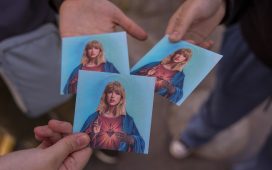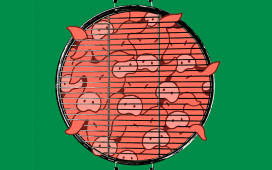The first time I received a death threat, I was surprised how much it frightened me. The day had long felt inevitable. On the other side of the “trans tipping point” coined by TIME magazine in 2014, when Laverne Cox graced its cover, I had just assumed that as a publicly facing trans woman of color, it was merely a matter of time before I was attacked for my work. Each day that went by without threats felt a little like living on borrowed time.
Trans visibility as a path to liberation has long been critiqued as a double-edge sword. On one hand, nuance and wide ranging representation are welcomed by audiences hungry to see themselves reflected in the world. On the other hand lies the danger that the feel-good ideas of representation actually serve as an alibi for the increased endangerment of trans people — most often femme, poor, and Black or of color. Stonewall veteran Miss Major put it this way, talking about the TIME cover: “People all around the world were amazed by Laverne’s cover story. However, for the girls who have to live on the streets and off their wits, this was not something that was beneficial.” Even Cox’s fame could not insulate her from transphobic violence last fall, and 2021 has already seen an over 200% jump in violence and murder against trans people. As Major explained, too many trans women keep “pay[ing] the price for what the media is applauding and the world is getting all happy over.”
Trans visibility may indeed be a double-edged sword, but the blade aimed at trans youth, along with working class and racialized trans people, cuts deeper.
What have we missed in narrowly focusing on visibility, seven years out from that tipping point? After four years during which the Trump administration worked overtime to write trans people out of bureaucratic existence, remove meager healthcare protections, and disqualify trans people from access to public institutions, the situation is arguably even more dire. However much the Trump presidency’s signature incompetence frustrated the success of its anti-trans initiatives, Republican state legislators are proving terrifyingly effective. Eager to fill their campaign coffers with money from registered hate groups like the Alliance Defending Freedom, and distract from their horrendous failure to govern in the COVID-19 pandemic, legislators have begun a fevered crusade to pass extremist anti-trans legislation. Most of these dozens of bills target children, some going as far as to criminalize doctors who provide gender affirming healthcare, make playing organized sports a crime, and legally force the invasive examination of young children’s private parts.
Meanwhile, the Oreo cookie company infamously tweeted on February 25 that “Trans people exist,” about as laughable a lukewarm affirmation as there ever was.
I believe increased visibility has actually increased attacks on the trans community, just as Major predicted. When folks turn on the TV and see trans characters appearing in a growing number of series, from The Adventures of Sabrina to American Horror Story, they assume that real progress has been made. In fact, surveys consistently show that the general public vastly overestimates how many rights and privileges LGBTQ+ people enjoy. This overestimation leads people to overlook numerous brutal realities, including but not limited to the fact that even before the pandemic, nearly one third of trans folks lived in poverty, with an unemployment rate three times the national average. Nearly a third of trans people living in the U.S. have experienced housing discimination and or homelessness.
Worse still, well-intentioned onlookers aren’t the only ones paying attention to the increased numbers of trans figures in the media. So are anti-trans groups and lawmakers, motivated to pass transphobic legislation aimed at expelling trans people from the public sphere. Trans activists have been sounding the alarm over the onslaught of state bills for months, yet mainstream media coverage is only now beginning to pay attention, far too late to stop the passage of several of these dangerous measures.
Pandemic fatigue may play some role, but there is a more disturbing truth at hand: trans visibility is an obstacle. It makes cis people and allies feel good. But feeling good about trans people without caring to know about the material reality of their lives colludes with anti-trans backlash.
However innocent things like the Oreo tweet or having a Vice President who lists her pronouns in her bio might seem, these symbolic gestures further antagonize trans women, trans people of color, and trans youth. How? By directing public attention away from the real and present threats to their lives, which are far more complex.









